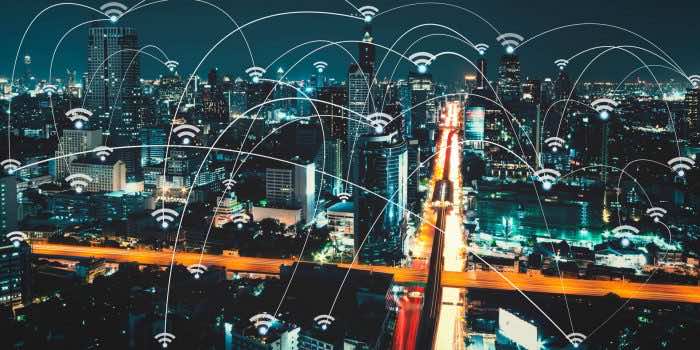Almost everyone has a smartphone that has support for Wi-Fi. Wi-Fi sources are everywhere, even your own home must have more than one Wi-Fi modem to connect to. The rise of the digital age has led to an almost oversaturation of 2.5GHz radio frequencies being used for Wi-Fi signals. Most of these signals to unused as Wi-Fi is rarely used to its maximum capacity. According to a new research project, we may be able to harness the unused signals.
The excess signals can be used to produce energy as shown by a group of researchers from the National University of Singapore or NUS and Japan’s Tohoku University or TU. The research team has developed a technology that employs the use of tiny smart devices known as spin-torque oscillators (STOs). These STOs are used to harvest and convert radio frequencies into energy. This energy can then be used to power small electronics.

The team showed how a small LED light could be powered almost wirelessly, without any sort of battery use. While a single STO is a very low power output but if connected in series this problem can be overcome. The team used an array in which eight STOs were connected in series. This array was able to convert the 2.4GHz radio waves used by Wi-Fi into a direct voltage signal.
The voltage was enough to light up a 1.6 volt LED. It could even charge a capacitor to keep the LED lit for one minute even after the wireless power was switched off. The research project is led by Professor Yang Hyunsoo from the NUS Department of Electrical and Computer Engineering. The research is a collaboration between the research teams of Professor Guo Yong Xin and Professor Shunsuke Fukami.

According to Professor Yang, “We are surrounded by Wi-Fi signals, but when we are not using them to access the Internet, they are inactive, and this is a huge waste. Our latest result is a step towards turning readily available 2.4GHz radio waves into a green source of energy, hence reducing the need for batteries to power electronics that we use regularly. In this way, small electric gadgets and sensors can be powered wirelessly by using radiofrequency waves as part of the Internet of Things. With the advent of smart homes and cities, our work could give rise to energy-efficient applications in communication, computing, and neuromorphic systems”.
The team is looking into enhancing the power output of their solution by adding more STOs to their arrays. They even plan to test if they can power other electronic devices and sensors. This could potentially open up ways for true wireless charging and even wireless signal detection systems.
Imagine your phone starts charging as soon as you connect to the Wi-Fi.


